How the Red Army stormed the capital of Slovakia
75 years ago, the Red Army stormed the capital of Slovakia. On April 1, 1945, units of the 2nd Ukrainian Front advanced to the northeastern outskirts of Bratislava. On April 4, our troops completely liberated the Slovak capital.
General situation
In the spring of 1945, Soviet troops continued their offensive on the southern wing of the Eastern Front. On the right flank of the 2nd Ukrainian Front (2nd UV), the 4th Ukrainian Front launched an assault on the Moravian-Ostrava industrial area on March 10, 1945. On the left flank of the 2nd UV, the 3rd Ukrainian front was advancing in the Vienna direction. The offensive on Vienna involved the left wing of the 2nd UV - the 46th Army and the 2nd Guards Mechanized Corps. The 46th Army of Petrushevsky struck in the Vienna direction and at the same time created a threat from the south of the Bratislava group of the Wehrmacht.
The right wing of the 2nd Ukrainian Front under the command of R. Ya. Malinovsky - the 40th and 53rd armies (on March 25 this army was redirected to participate in the attack on Brno) along with the 4th and 1st Romanian armies, 10 - On March 30, 1945, she conducted the Banska Bystric Operation. The Soviet-Romanian troops were supposed to fetter the Germans in the central part of Slovakia and provide from the north cover for the main front forces advancing on Bratislava and Vienna. Advancing in the difficult mountainous-wooded area of the Western Carpathians, Russian troops completed the task. The Germans could not inflict a flank attack from the north and transfer troops from the Carpathians to Austria. Our troops liquidated the bridgehead of the Germans on the left bank of the Gron River, occupied the important industrial center and communications center of the city of Banska Bystrica. Thus, the moment for the strike on Bratislava and Brno was favorable.
Operation plan and strength of the parties
The main blow the Red Army inflicted on the Bratislava direction. In this operation, units of the 53rd and 7th Guards Armies, the 1st Guards Horse-Mechanized Group were involved. They were supported by the Danube Military flotilla Kholostyakova and the 5th Air Army of Goryunov (she also partly supported the 46th Army in the Vienna direction). The 40th army of Zhmachenko, after the completion of the Banska-Bystric operation, attacked the city of Trencin. Romanian troops (1st and 4th armies) supported the Russian offensive. In total, the forces of the 2nd UKF numbered about 340 thousand people (270 thousand Soviet troops), over 6 thousand guns and mortars with a caliber of 75 mm or more, 240 tanks and self-propelled guns, 645 aircraft.
The adjacent flanks of the 53rd and 7th guard armies under the command of Managarov and Shumilov were given the task of crossing the Gron river and breaking through the enemy’s defense line. Pliev’s 1st Guards Horse-Mechanized Group was introduced into the breach. KMG was supposed to prevent the Germans from gaining a foothold on prearranged rear defensive lines on the rivers Nitra, Vag and Morava. Shumilov’s army was aiming at Bratislava, KMG and the 53rd army at Brno. In March, our troops prepared for the offensive. To overcome the river. Gron concentrated pontoon parts and ferry facilities. Slovak partisans assisted Soviet troops by providing intelligence and guides.
The Germans had a strong defensive line on the Gron River. The west bank of the river was significantly higher than the east. In spring, the river spread widely, which complicated the use of heavy weapons. As a result, the Nazis had the opportunity to detain our troops at the borders of the rivers Gron, Zhitava, Nitra and Vag. Our forces opposed 11 divisions of Army Group South under the command of Otto Wöhler (from April 30 Army Group Austria Lothar Rendulic). On the river Gron stood the troops of the 8th Army of General Craising. From the air, part of the 8th Army was supported by part of the forces of the 4th Air Fleet. The German Bratislava group numbered about 200 thousand people, 1800 large-caliber guns and mortars, 120 tanks and assault guns, 150 aircraft.
Bratislava-Brnovsk offensive operation
On March 23, 1945, units of the 25th Guards Rifle Corps on the left flank of Shumilov’s army launched an auxiliary operation, distracting the enemy. Soviet troops crossed the Gron River and launched an offensive along the Danube on Komarno. The Danube Flotilla played a major role in the success of the operation. On March 28, a flotilla landed a landing force (the 83rd Smirnov Marine Corps Brigade) in the German rear in the area of Mocha. Our troops captured the port of Komarno. March 30, Soviet troops took Komarno, connecting with the advanced landing units.
At the same time, the Danube crossed parts of the 23rd Rifle Corps of the 46th Army under the command of Major General Grigorovich (the corps was then transferred to the 7th Guards Army Shumilov). Grigorovich’s corps crossed to the north bank of the Danube west of Komarno, went to the rear to the Nazis and, together with the 25th corps advancing from the front, began moving to the Slovak capital between the Danube and the Small Danube. This caused the collapse of the defense of the German army.
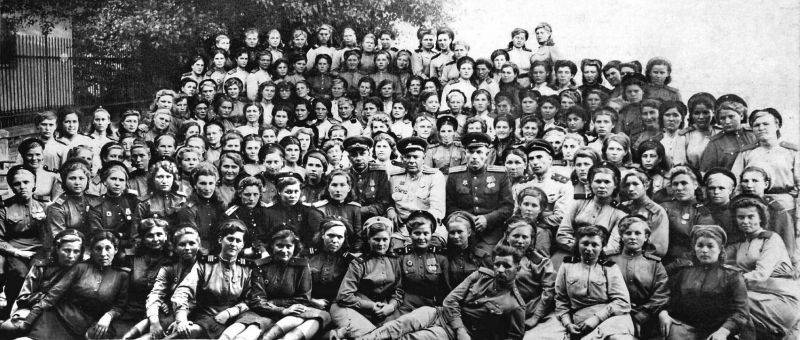
The main blow was struck on the right flank of the 7th Guards Army (27th Guards Rifle Corps) and the left flank of the 53rd Army. On the night of March 25, 1945, advanced battalions crossed the Gron, destroyed the German guards, and occupied a right-bank floodplain of the river on a 17-kilometer stretch, reaching the front line of the enemy’s defense. At the same time, the pontoon units brought in crossings. In the morning, strong artillery preparation began. Soviet aircraft attacked enemy positions, firing points, headquarters and tactical reserves. Thanks to well-conducted reconnaissance (including airborne) artillery strike and aviation chalk big effect. Under the cover of salvos of guns and air strikes, advanced units and sappers continued to move. The main forces began to force the river. Our troops occupied an extensive bridgehead. On the first day of the operation, Soviet troops occupied a bridgehead with a width of 20 km and a depth of 10 km. The front line of defense of the Nazis was broken.
The pontoon units introduced additional ferries to advance the 1st KMG. On the evening of March 26, Pliev’s group launched an offensive. She completed the breakthrough of the enemy's tactical defense zone and rushed into the gap. By March 28, the front's strike force created a gap up to 135 km wide and 40 km deep. Up to 200 settlements were freed. Pliev’s cavalry did not stop to capture enemy defensive points, circumvented them, smashed the rear of the Germans, preventing them from gaining a foothold on the rear lines. The word "Cossacks" caused a panic among the Nazis. The KMG was greatly supported by aircraft, which attacked the outgoing columns of the enemy. KMG Plieva forced the Zhitava River. The Germans, trying to somehow stop the Russians, blew up all the bridges across Zhitava, threw part of the equipment and weaponsto have time to gain a foothold at the turn of the river. Nitra Here the Nazis had strong fortified points: the cities of Nitra, Komyatitsa, Shurani and Nove Zamky. German troops tried to stop the Russian offensive, even counterattacked.
However, Soviet troops continued the offensive. Parts of the 10th Guards Cavalry Division bypassed the city of Shurani, which predetermined its fall. Our troops also intercepted the routes leading to Nove Zamky and on March 29 took the city. Thus, the Red Army opened the shortest route to Bratislava. At the same time, Soviet troops captured Nitra. Pliev guardsmen cut the roads leading from the city to the west. The Nazis were blocked. The Soviet infantry struck from the east. Units of the 53rd Army left Nitra from the north. The Germans retreated to the mountains, where they were soon finished off by partisans. March 31, Nitra fell.
Sturm Bratislava
Having occupied Nove-Castles and Shurani, on March 30, 1945, the Red Army reached the Vag River. Bridges across the river were destroyed. The river spilled. However, engineering units quickly crossed the river, Soviet troops maintained a high pace of movement. By the end of the day the river was crossed, and on April 1 the cities of Trnava, Glogovec and Senec were taken, which covered the Slovak capital itself. German divisions due to the rapid movement of the Russians lost a lot of equipment and weapons between the borders of the river. Nitra and Wag. This significantly weakened their combat effectiveness.
On April 1, 1945, the 25th Guards Corps of the Shumilov Army reached the eastern and northeastern outskirts of Bratislava. Parts of the 24th and 27th buildings and Pliev’s group made their way to the Small Carpathians, in the area northeast of the capital of Slovakia. The city was well prepared for defense: anti-tank ditches and hollows, blockages, barricades and minefields. Many buildings were prepared for defensive defense, equipped with firing positions in them. The northern part of the city was protected by the Small Carpathians, which were considered impregnable, from the south there were large water barriers - the Small Danube and the Danube. Therefore, the Nazis located their main forces in the eastern part of the city, on the site between the mountains and the river. The outer contour of the defense line consisted of three lines of trenches with numerous equipped firing positions. The remnants of the defeated German units and numerous auxiliary, rear, and militia units defended Bratislava.
To speed up the fall of Bratislava, the front commander Malinovsky decided to take control of the city by bypassing from the north-west. Our troops began the assault on the enemy’s strong positions in the Lesser Carpathians, creating the threat of bypassing the enemy garrison from the north and north-west. The commander of the 7th Guards Army, Shumilov, decided to attract the Danube flotilla and the 23rd Corps, which had recently been included in the army, to storm the Slovak capital. The ships of the flotilla made a 75-kilometer throw from Komarno to Bratislava, along a dangerous and mined channel. Sailors took part in the liberation of the city. The city was taken by simultaneous strikes from the northeast and southeast.
On April 2, 1945, the Red Army broke through the outer contour of the enemy fortifications and broke into the eastern and northeastern outskirts of the capital of Slovakia. To speed up the capture of the city, assault groups were formed. For two days there was a stubborn battle. Soviet attack aircraft took house after house, street by street, block by block. By 12 o’clock on April 4, Soviet troops reached the center of the capital. By the end of the day the city fell. The remnants of the German garrison fled towards Vienna. In Moscow, a solemn salute thundered in honor of the heroes of the assault on Bratislava. The 23rd and 25th guards rifle corps, the 252nd and 409th rifle corps, the 5th and 26th anti-aircraft artillery divisions received the honorary names of the "Bratislava".
As a result, in ten days of operation, Malinovsky’s troops broke into the strong line of defense of the German army on the Gron River, and did not allow the enemy to gain a foothold on the rear lines on the river Nitra and Vag, liberated the capital of Slovakia and several hundred settlements. The road to Vienna and Brno opened from Bratislava.
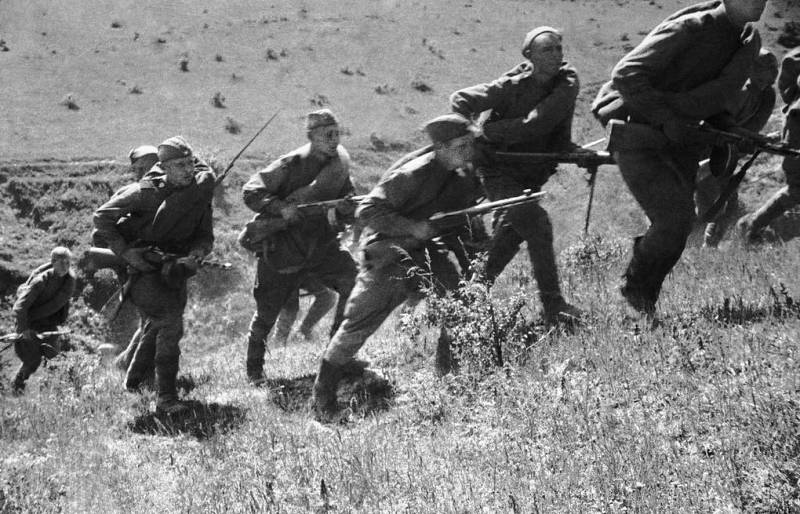
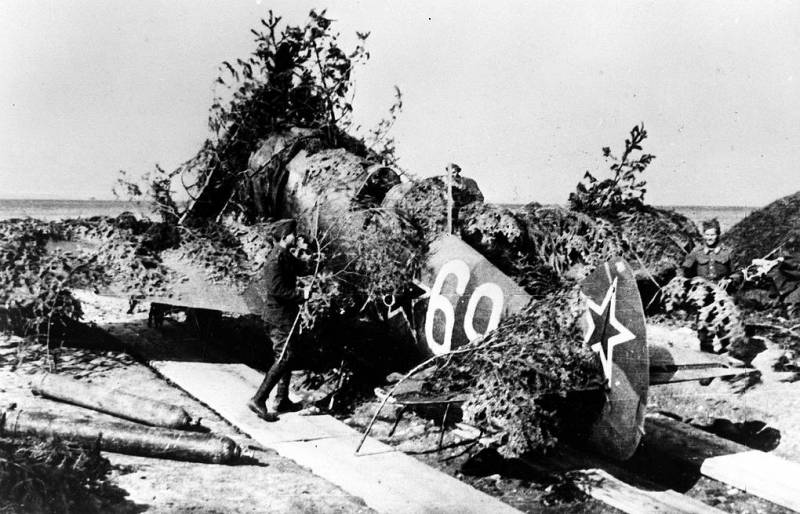
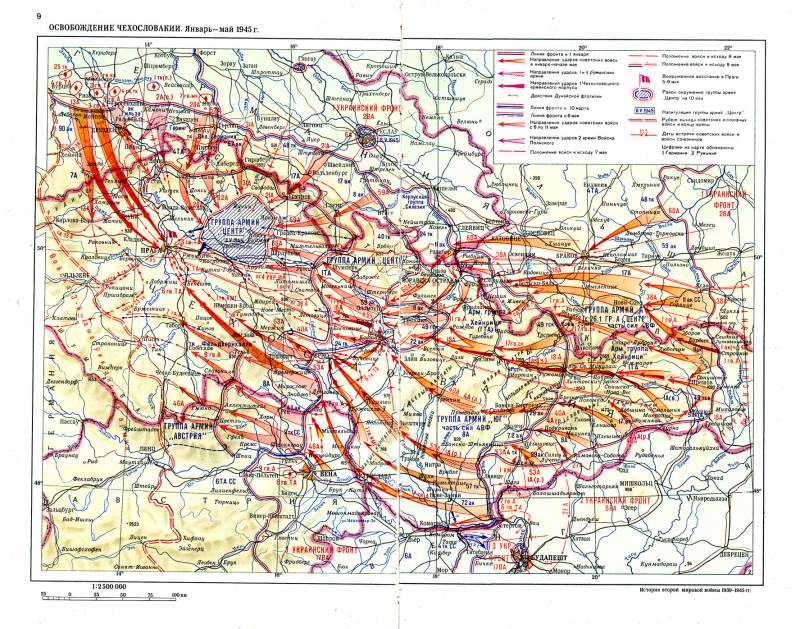
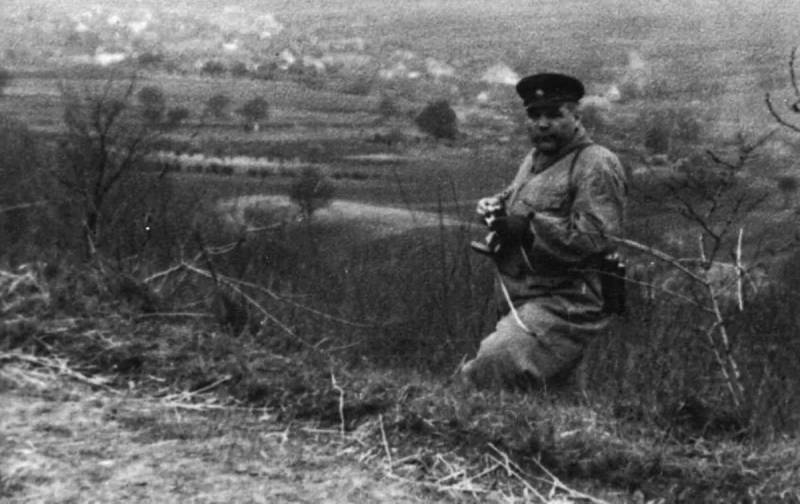
Information